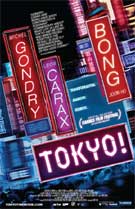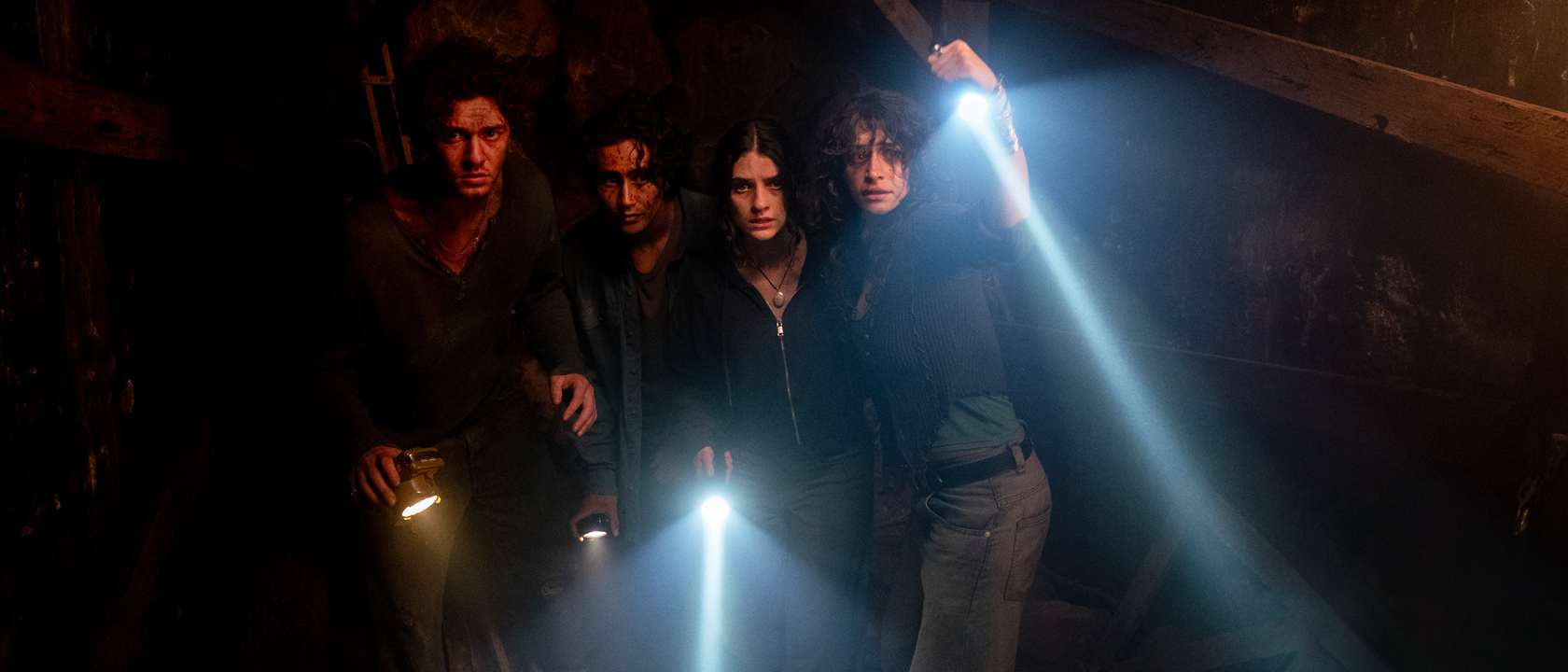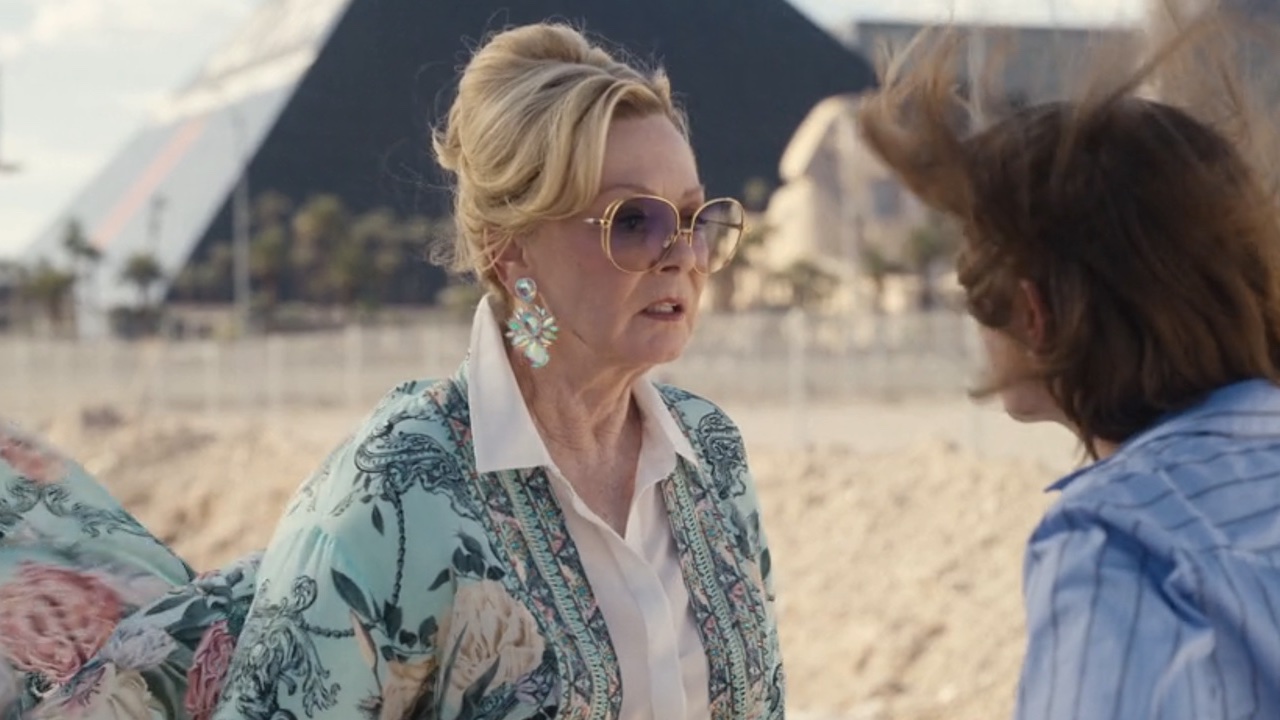In the spirit of Paris, je t’aime comes a collection of short films centered around the newest city to get the cinematic treatment, Tokyo. The film, Tokyo! features segments from directors Michel Gondry, Leos Carax, and Joon-ho Bong. It seems like Tokyo must be a pretty strange place, if these are the shorts that inspired it, as they are all extremely bizarre in their own way. Gondry and Bong’s pieces manage to be fun with a touch of strange while Carax’s is just plain weird to the point of being disorienting. But, regardless of the level of strange, this collection of films is a must see for fans of foreign cinema. Tokyo! is a success in that it makes you feel like you’re getting 100 minutes of immersion into Japanese culture as it stands in the city of Tokyo. Tokyo! opens with the best of the bunch, Michel Gondry’s “Interior Design,” which focuses on a young couple who move to the city and stay with a friend. The short film begins with a boisterous car ride in the rain, which has the driver telling stories about humans that have learned to adapt by mutating into amphibians. The small conversation is a great way to set the pace for the imaginative little piece. The couple reaches their destination, which turns out to be a friend’s apartment, and oh what a tiny apartment it is. “Interior Design” manages to give us Tokyo from the inside out, by showing us numerous apartments, some lived in, some empty. The conversations lain over the numerous tiny living quarters are heartbreakingly true to life. The “inside” view of the city manages to be much more complex and complete than the other two films. As a bonus, in true Gondry fashion, there is a majorly imaginative twist at the end of the film, one that you will never ever expect even with the tiny hint from this reviewer.
The next stop on the Tokyo! tour is Leos Carax’s “Merde,” which follows the story of the “creature from the sewers,” of Tokyo. The little film is ridiculously offensive to the eyes and ears. We are initially introduced to the creature in the first few seconds of “Merde,” as he crawls out of a pothole on the street. The “creature” is really just a man, but the man (Denis Lavant) truly gets you to believe that he is an animal. Walking in a jerky gait, with a greased up complexion, uttering guttural noises as language, Lavant is guaranteed to gross you out. The creature does some bad things, gets noticed and gains notoriety quickly. In order to communicate with the creature, the media flies in a French lawyer that claims to be somehow related to it. The rest of the film loses any momentum it may have had in the courtroom where the writers felt it necessary to have the characters translate each line from Japanese to French to Creature-ese and back again, over and over and over. The sound of “Creature-ese” is so wildly unpleasant that you’ll want to put the television on mute! The best thing this little film has going for it is that it is short. It wraps up messily, but not without some full frontal nudity, some scenes in the sewers and a graphic hanging scene. “Merde” does get you some sweet shots of Tokyo as the creature runs through the streets, but those few moments are completely outweighed by the ugliness of the rest of the film.
Finally, we get to meet the “hikikomori” featured in “Shaking Tokyo.” The term, “Hikikomori” refers to an individual that has withdrawn from life completely, what we in the states might call a “shut-in.” The man featured in “Shaking Tokyo” has been living in his tiny Tokyo apartment for ten years, he receives money from his father and never leaves the house. He gets all of his food delivered but manages to never make eye contact with the people doing the drop offs… until one day when he gives in to meet the eyes of a hot pizza delivery girl. “Shaking Tokyo” is a love story that manages to show us the inside and outside of Tokyo. At it’s heart, the story is simply a boy meets girl story, but it is also so much more than that. The hikikomori brings us through so many emotions as he finds something in life that is worth going outside for. It is a beautifully simply story, perfect for the small amount of time it has to tell it.
From the cute, tiny dolled up apartments in “Interior Design” to the sewer systems of “Merde,” to the residential streets of “Shaking Tokyo,” you've certainly certainly seen a lot of the city by the end of the film. Gondry’s “Interior Design” focuses on a naïve young couple and what their purpose in the city will be; as the couple goes apartment-hunting, we get a cockeyed view of inner-Tokyo. Carax’s “Merde” lets us see the streets of Tokyo from a Godzilla-like perspective. The final film, “Shaking Tokyo” lets us into the level of loneliness faced when living in a big city like Tokyo; it leaves the audience with a vulnerable view of the city. I’m sure that more films would have added to the completeness of the view of presented here, but the view is fairly fleshed out as is. Tokyo! certainly doesn’t make me want to hop a plane to Japan, but it does make for an extremely interesting cinematic understanding of a chaotic city. The disc is filled with behind-the-scenes extras, but much of it is so rough that it doesn’t really seem like a special features, just features. The extras for Tokyo! include a photo gallery, three making of featurettes (one for each film) and one interview with each director. I think a commentary with all three directors over the entire film would have been fun, but we get so much already that it seems like enough. The photo gallery is a lot of fun, although for “Merde” it’s mostly just screen shots, but in “Shaking Tokyo” and “Interior Design” we get a cute personalized behind-the-scenes peek from the inside.
Michel Gondry’s film is the clear star of Tokyo! and he is also the star of the special features. His segments are about a hundred times better produced than those for the other two directors. The “Making of ‘Interior Design’” brings us through all of the different aspects of what the producers of the bit call MGstyle. There is a lot of raw behind-the-scenes footage, with interviews with Gondry spliced in and notes on production scrawled over the screen. It is an extremely complete little making-of-doc, with interviews with all of the cast members, even the minor ones. The doc explores everything from the themes of the film to Gondry’s bird’s eye view camera angles. Interestingly enough, Gondry refuses to give away any of the special effects he uses to make the twist at the end look real; he claims that would “kill the magic” of it. The separate interview with Gondry is also above and beyond. The interviewer asks questions like “what is your favorite Japanese word?” and gets boisterous answers from Gondry and his production assistant. Although poorly lit, it is a cute segment.
The behind the scenes stuff included on the disc for “Merde” is a few rungs below the stuff for “Interior Design.” The “Making of ‘Merde’” is really just a lot of slow moving behind-the-scenes footage with very little in the way of interviews and certainly no production notes scrawled across the screen. We get to watch a lot of footage of the actors practicing one of the scenes in which the creature walks down the street. We find out, during this scene that they have no permits for the street scenes and will have to shoot guerilla style. The interview with director Leos Carax is possibly the most depressing special feature I’ve ever seen. It is extremely poorly lit (like almost all of the special features) and in it he cops to not being a fan of the city of Tokyo by saying “I don’t know that city. I don’t’ enjoy walking it’s streets.” He chain smokes throughout the interview and talks about how he can’t get any of his films made these days that that’s why he said “yes” to making Tokyo!.
The absolute worst part of the special features is the “Making of ‘Shaking Tokyo’.” The featurette is all shot from some bizarre angle, it is pointed at the screen where the director can see what is happening on the camera but there is a strange reflection, so there are two images simultaneously. The entire featurette consists of a bunch of Japanese people crowded around the screen, all talking at the same time. It definitely has the feel of “special features on a budget.” The interview with Joon-ho Bong is, again, poorly shot, as he is standing against a slab of concrete in the wind. It is not pretty nor functional. Although his interview looked the worst, he certainly had the most meaningful things to say about the city of Tokyo. He claims that “It is a lonely city. It’s crowded but it feels empty.” He explained watching people as they bring home their single-serving dinners night after night. It seemed like he had the most experience of the directors with Japanese culture by more than a mile. Its is a shame that he couldn’t have gotten the Gondry treatment, I would have loved some more nuggets of wisdom from him.
Hacks Went Back To Vegas, And It Made Me Miss The Old Seasons For One Big Reason
Tom Cruise's Running Style In The Mission: Impossible Films Is Iconic, And Apparently, It's Connected To One Of His Outsiders Co-Stars
Somebody Actually Used It’s Always Sunny In Philadelphia’s Musical To Propose, And It’s Weirdly Sweet











